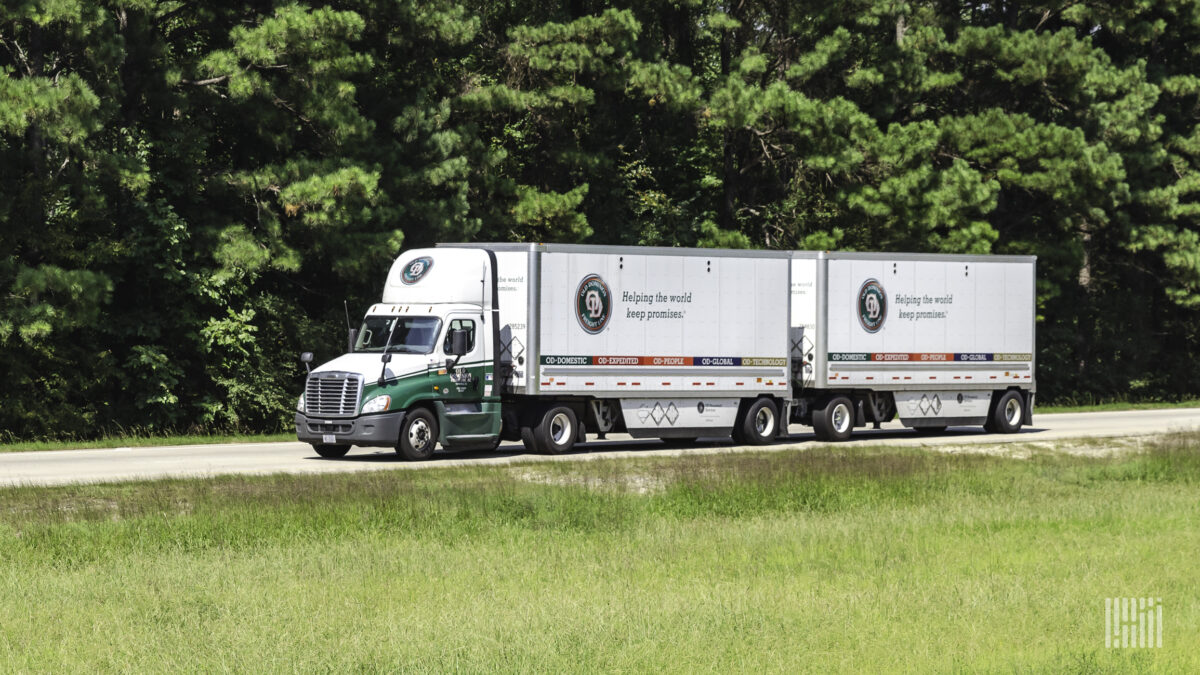Old Dominion Freight Line reported record results for the 2022 second quarter on Wednesday. The less-than-truckload carrier achieved a watershed moment for the industry, posting a 69.5% operating ratio (30.5% operating margin) during the period.
The result was driven by strong yields — 9% higher year over year (y/y) excluding fuel surcharges — accompanied by only modest tonnage growth. The high-water mark for margins may be tougher to replicate in the third quarter as tonnage has begun to flatten off of recent highs and cost headwinds will step higher. However, the carrier is expecting no letup in the industry’s favorable pricing dynamics.
“So far, we haven’t seen much, if any at all, of any customers asking for cheaper rates or any kind of exception pricing,” Greg Gantt, president and CEO, stated on a call with analysts. “From what we can tell, the industry is extremely disciplined.”
Before the market opened Wednesday, Old Dominion (NASDAQ: ODFL) reported earnings per share of $3.30, 14 cents better than the consensus estimate and 99 cents higher y/y. Revenue increased 26% y/y to $1.67 billion as revenue per hundredweight, or yield, jumped 23% and daily tonnage increased 3%.

The top line continued to increase in July but at a more subdued pace.
Daily revenue is 18% higher y/y so far in the month with tonnage down slightly compared to last year. Yield is up 7.5% y/y excluding fuel. The metric is being somewhat constrained by heavier shipment weights.
Tonnage appears to have leveled in June, flat both y/y and sequentially, again compared to record levels.
“We feel good about demand. We’ve had a lot of customer engagement in recent months, and we’re hearing good things from our customers,” CFO Adam Satterfield said. He acknowledged that “volumes are a little bit flatter” but again compared to very high growth rates in recent periods.
The company remains on pace to achieve more than $1 billion in revenue growth for a second consecutive year.
Growth in revenue per shipment during the second quarter outpaced the growth in cost per shipment by 440 basis points. The spread was 60 bps negative when backing out the impact of fuel. As a percentage of revenue, almost every expense line moved lower y/y, with salaries, wages and benefits down 400 bps and purchased transportation declining 80 bps to just 2.6% of revenue. Operating supplies (largely fuel) were up 380 bps y/y.
The 69.5% OR, 280 bps better y/y, was the best ever recorded among the publicly traded LTL companies.
The goal is to get to a sub-70% OR on an annual basis. That may not happen this year as Old Dominion operated at a 71.1% OR through the first half of the year and it will have some cost headwinds in the back half.
Margins normally deteriorate 50 bps from the second to third quarters each year. The company will also contend with 100 bps of incremental marketing costs in the back half, a step up in miscellaneous expenses and an annual wage increase in September. All in, Satterfield expects the third-quarter OR to deteriorate by 100 bps to 150 bps sequentially.
Historically, the company’s fuel surcharge program has exceeded fuel cost inflation by 100 bps to 150 bps, which can be incrementally supportive of yields especially in an increasing fuel cost environment. Management said it doesn’t expect much of a change to the long-term trend even if diesel prices were to moderate.
Changes in tonnage normally correlate highly with changes in head count. As volumes have leveled, the company is no longer actively hiring. Old Dominion added 6,000 employees throughout the pandemic in response to record demand. It expects normal attrition will keep pace with modest tonnage declines, allowing it to avoid broad job cuts. The difficulty the industry had finding workers and drivers over the past two years will likely prompt the company to hang on to staff longer than it normally would in a downturn.
Management isn’t resigned to the belief that a freight recession is imminent.
“We felt like that if consumption did slow and had the effect of slowing overall GDP, that freight demand could remain strong, and certainly we feel like that’s what we’re seeing and what we continue to hear from our customers,” Satterfield continued.
“We’re still hearing overall that generally inventories are lower than what they need to be. Many of our customers are still dealing with record numbers of backorders that they’ve got to figure out how to get labor and fixing other supply chain issues to make sure they’ve got all the parts and pieces to produce finished product to fulfill those orders.”
Net cash flow from operations was $816 million in the first half of 2022, a more than 60% increase compared to the same period last year. Old Dominion expects full-year capital expenditures of $835 million. It has $300 million in real estate expansion projects planned for 2022 and will spend $485 million on tractors and trailers. The remainder of the capex is allocated to IT spend.
The company plans to open roughly 10 terminals this year. It has about 15% to 20% excess capacity in the network currently but wants to move that closer to the longer-term target of 20% to 25%, which it believes is the level required to continue to take market share.
More FreightWaves articles by Todd Maiden
- Heartland Express: ‘Volatile freight demand’ in H2 will exceed available capacity
- Landstar’s Q2 misses mark; revenue per load steadies
- Knight-Swift positioned to perform in H2; LTL provides spark in Q2











